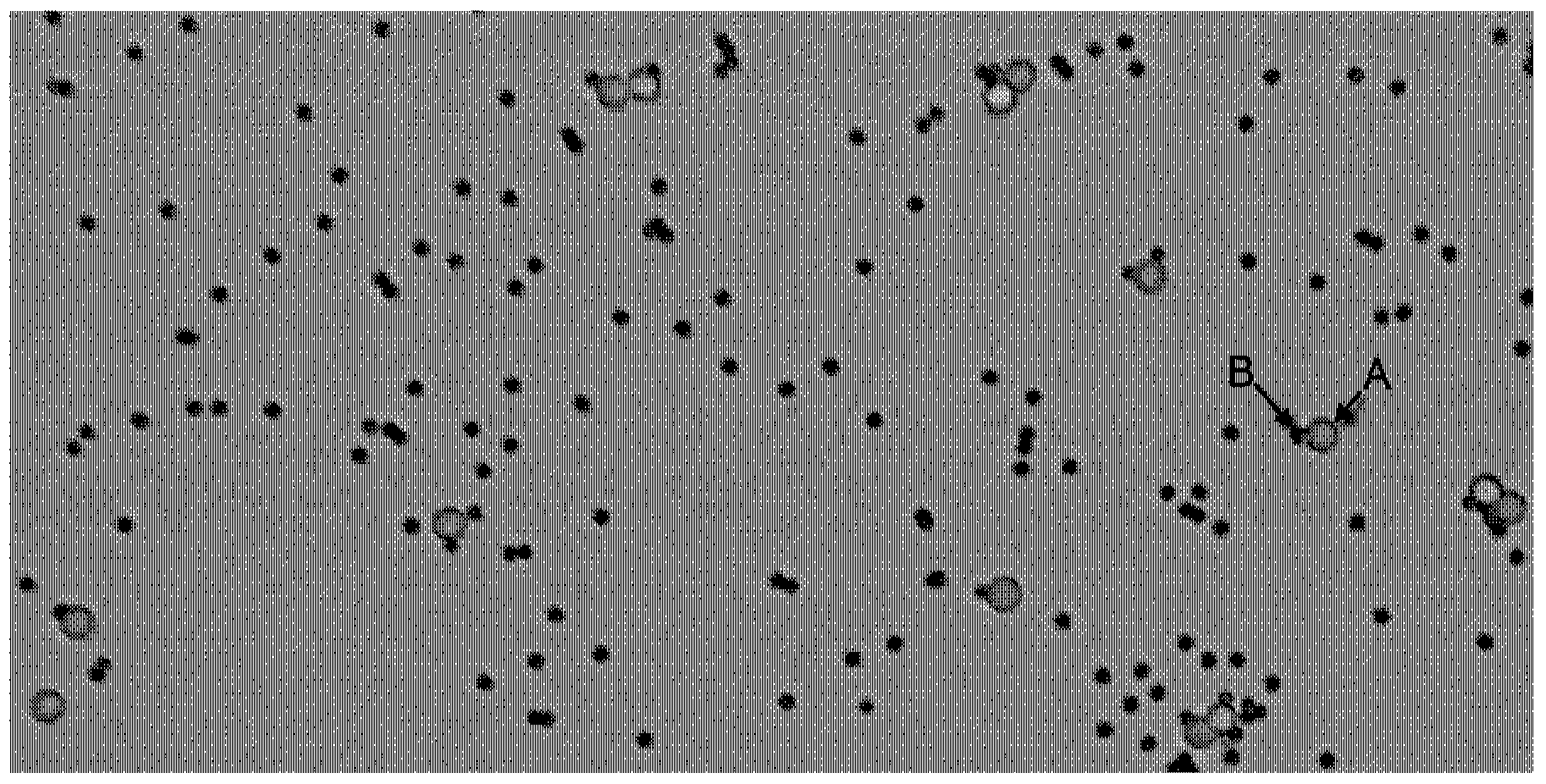Quick identification and separation method of affine nucleic acid molecule
A nucleic acid molecule and molecular technology, applied in the field of identification and separation, can solve the problems of different sequence amplification efficiency, high cost, and inability to quickly and directly obtain a single sequence nucleic acid molecule, and achieve the effect of avoiding false positives
- Summary
- Abstract
- Description
- Claims
- Application Information
AI Technical Summary
Problems solved by technology
Method used
Image
Examples
Embodiment 1
[0044] Example 1: Rapid identification of single-stranded DNA nucleic acid aptamers
[0045] This embodiment is a preferred embodiment, specifically as follows:
[0046] 1. Coupling of primers on the surface of microbeads; either covalent coupling or non-covalent coupling of primers to microbeads;
[0047] Take 50uL polystyrene (PS) microbeads with carboxyl groups (as microbeads A), wash twice with 0.01M NaOH solution (the specific method is: centrifuge the sample at 8000rpm for 12min, discard the supernatant, add 0.01M NaOH Solution, mix well and let stand for 5min, then centrifuge again), wash with deionized water 3 times, discard the supernatant; dissolve the amino-modified primer with deionized water, the final concentration is 100uM, take out 20uL, add In the centrifuge tube of ethylene microbeads, add the same amount of deionized water to the control group; add 50uL MES buffer solution (0.4M MES, pH5.0) into the tube; shake at 300 rpm, shake and mix for 30min; add 30uL...
Embodiment 2
[0070] Example 2: Promoter Screening
[0071] If you need to screen double-stranded DNA sequences that bind to transcription factors, you can follow the same process as above: first construct a library containing various possible promoter recognition sequences, and use emulsion PCR to amplify these sequences into different microbeads A Above, refer to steps 1, 2, 3, 5, and 6 in Example 1 to carry out. Since the double-stranded DNA sequence is screened here, there is no need to melt the PCR product on microbead A. If specific sequence information is required, it is only necessary to sequence the sequence on a single bead.
Embodiment 3
[0072] Example 3: Rapid Identification of RNA Molecules
[0073] If it is necessary to identify the binding of the RNA molecule library to the target, the steps in Example 1 can be referred to, but the following improvements need to be made:
[0074] Due to the difficulty of directly utilizing the RNA-dependent RNA polymerase to amplify the RNA molecule, the following scheme is adopted in the present invention:
[0075] First, couple the two sequences on microbead A at a molar ratio of 1:100, as described in Step 1 of Example 1; among the two coupled sequences, the one with the smaller amount is a primer for amplifying DNA Sequences, the one with a large number is the paired sequence used to capture RNA molecules, where the end of the paired sequence used to capture RNA molecules is blocked and modified so that it cannot be used for extension and amplification;
[0076] Secondly, the RNA molecular library was reverse-transcribed into DNA, operated according to the instruction...
PUM
 Login to View More
Login to View More Abstract
Description
Claims
Application Information
 Login to View More
Login to View More - R&D
- Intellectual Property
- Life Sciences
- Materials
- Tech Scout
- Unparalleled Data Quality
- Higher Quality Content
- 60% Fewer Hallucinations
Browse by: Latest US Patents, China's latest patents, Technical Efficacy Thesaurus, Application Domain, Technology Topic, Popular Technical Reports.
© 2025 PatSnap. All rights reserved.Legal|Privacy policy|Modern Slavery Act Transparency Statement|Sitemap|About US| Contact US: help@patsnap.com

